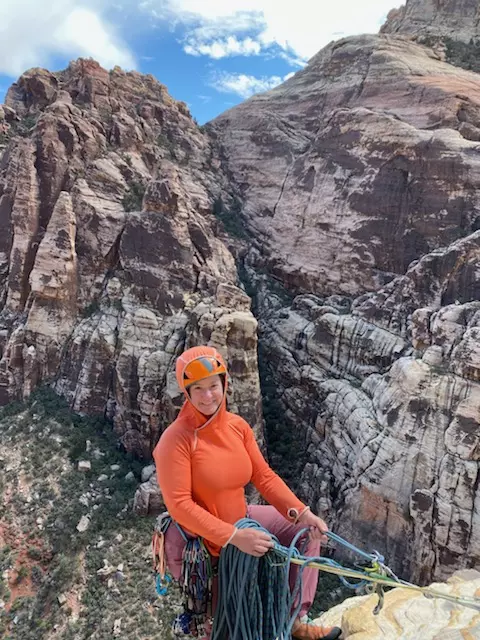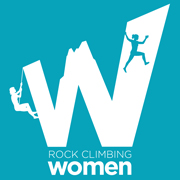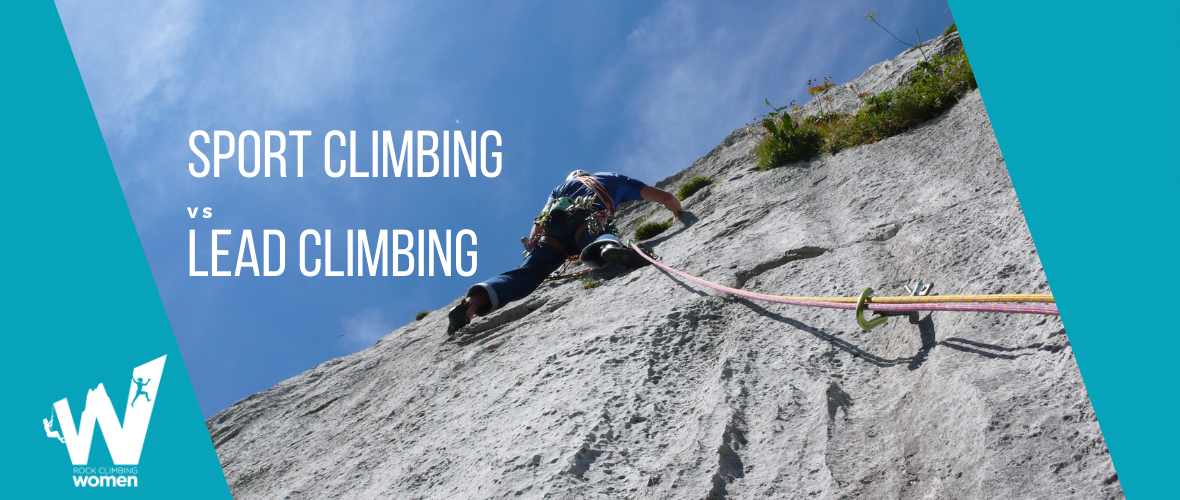Lead climbing is a required skill set for most outdoor roped climbing. If lead climbing is still a mystery to you, though, that is okay. You don’t necessarily need to know how to lead climb in order to enjoy sport climbing.
Let’s talk about your options, including top-roping and being an excellent belayer.
Whether we identify as strictly gym climbers, sport climbers, or trad climbers (or both!), top-roping is usually our first experience of roped climbing.
In the context of the climbing gym, this means that the gym has already hung ropes on an anchor and all you and your partner need to do is attach yourselves properly to each end.
The climber will tie a figure eight knot through the hardpoints of their harness while the belayer will thread the rope through a belay device and locking carabiner attached to their harness.
Meanwhile, a top-rope can be established in a couple of ways when we head outside to climb:
Find climbs that can be accessed from above, hike to the top of the climbing wall, and set up an anchor with your rope threaded through it. Once you know that your anchor is set up properly and both ends of your rope are on the ground, you can hike back or rappel down to the base.
It is important to note that this option does require the additional skills of being able to set up an anchor and rappel.
If a climb cannot be accessed from above and you don’t want to go free soloing (climbing a route without ropes) then one person in a party will need to lead the climb and set up the top-rope.
This last scenario is frequently the motivator for learning to lead climb and finally gets us to the answer for which we’ve been searching.
What is sport climbing vs. lead climbing?
Lead climbing is a skill set that is part of both sport and trad climbing.
It is how you get the rope that is attached to you from the ground to an anchor on your chosen climb. Because it requires less gear than traditional climbing and it can usually be learned and practiced at the gym, most climbers learn to lead climb on sport routes.
Lead Climbing
As a lead climber, you do not have a rope already hanging from an anchor on your route. Instead, you clip the rope into pieces of protection as you make your way up a climb.
On a traditional climb you would place your own trad gear on the way, which is why trad climbing requires additional skills and investment in gear.
For a sport climb, however, those pieces of protection will be the draws you clip into each bolt on the route. Lead climbing, however, is not the only new skill to learn.
Lead Belaying
You cannot lead climb without a partner to belay you and so belayers will also need to be able to lead belay. The biggest difference between top rope belaying and lead belaying is that a belayer will be feeding rope out to the lead climber as they ascend a route instead of taking up rope as they would with a climber who is top roping a route. The idea behind lead climbing and lead belaying techniques is to minimize the risk that a climber hits the ground should they fall in the process of leading the climb.
Lead belaying is really the most important skill here because as a belayer, you are ensuring the safety of your leading partner. So if the whole sport vs. lead climbing conversation is making you break out into a cold sweat (don’t worry, also normal for many of us), you can still make a very necessary contribution to your climbing partnership by learning excellent lead belay techniques.
If you want to nerd out more on lead belay techniques or just have a good visual of what this all looks like, check out the American Alpine Club’s instructional video AAC Universal Belay Standard: Lead Belaying and definitely contact your local climbing gym or outdoor school for lead climbing and belaying instructional courses.
Getting answers to questions like “What is sport climbing vs. lead climbing?” helps us build the inclusive community of safe and confident climbers we are dreaming of here at Rock Climbing Women.
Sign up below for our newsletter where we will shed light on all that climbing jargon, talk about gear, and help you get started whether you’re new or ready to level up.

Jenny Nichols got her climbing start in Flagstaff, AZ in 2007. Today she lives in Seattle, WA where she works as a K-12 teacher. While she also dabbles in mountain biking, hiking, and kayaking, her passion is to combine climbing and international travel. To date she has climbed in thirteen different countries. She’s currently also learning how to woman a sailboat.


